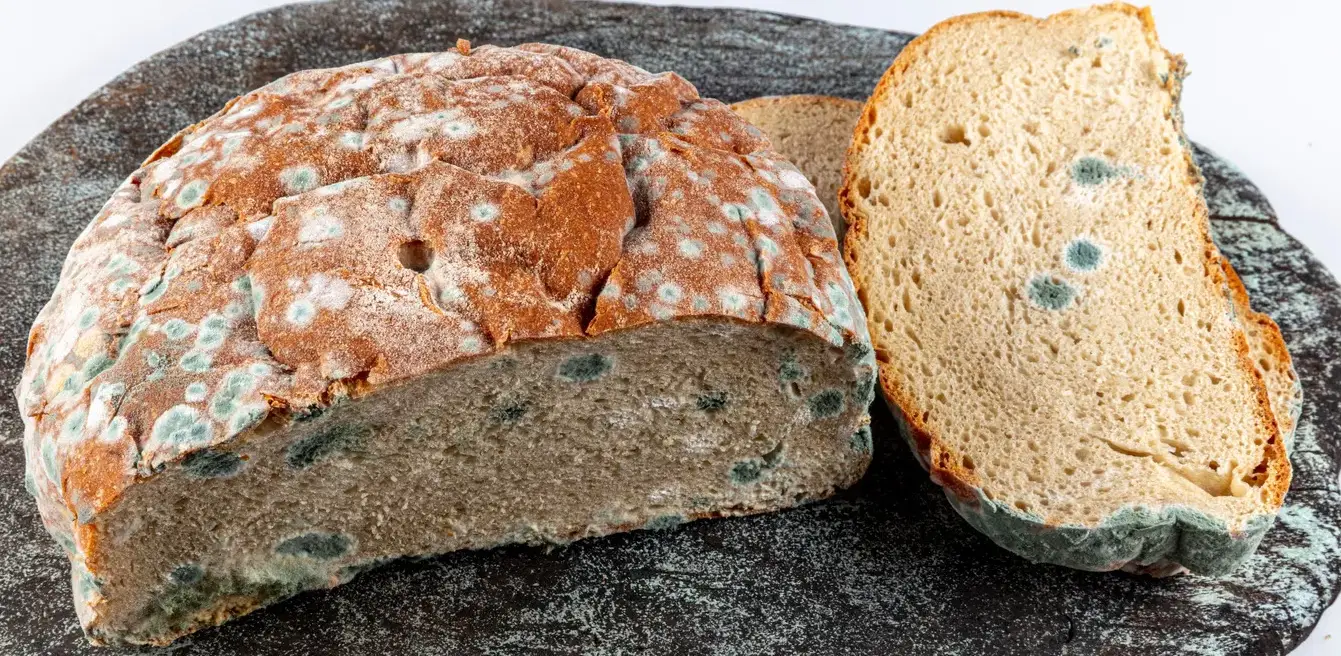Stale Bread: When It’s Safe to Eat and When It’s Time to Toss It
Most of us have stood in front of the kitchen counter, staring at a crusty loaf of bread and wondering: Is this still okay to eat, or should I throw it away? Bread is one of the most commonly consumed foods worldwide, but it also happens to be one of the quickest to lose its freshness. The line between bread that is simply stale and bread that is unsafe to eat can sometimes feel blurry.
The good news? In many cases, stale bread is perfectly safe to consume—and can even become a secret weapon in your kitchen. The bad news? Moldy bread is a different story, and eating it can pose real health risks. Knowing the difference can help you waste less, cook more creatively, and protect your health.
What Causes Bread to Become Stale?
When bread feels hard or dry, many people assume it’s “gone bad.” In reality, most of the time it has just gone through a natural process called retrogradation. This occurs when the starch molecules in bread crystallize after baking, pushing water out and leaving the loaf dry and firm.
Retrogradation doesn’t mean the bread is spoiled—it simply means it has lost moisture. That is why stale bread is safe to eat as long as no mold is present. While its texture might not be ideal for making a soft sandwich, it remains perfectly edible and can be transformed in a number of delicious ways.
Stale Bread vs. Moldy Bread: Knowing the Difference
It’s essential to distinguish between bread that is stale and bread that is moldy:
-
Stale bread: Hard, dry, slightly chewy, but free of any discoloration or fuzzy spots. Safe to eat.
-
Moldy bread: Green, black, white, or even pink spots on the surface. Unsafe to eat.
Bread is a porous food, which means mold can spread beneath the surface even if you only see a small patch. That’s why experts advise discarding the entire loaf at the first sign of mold, instead of trying to cut off the affected part.
Mold produces mycotoxins, substances that can cause allergic reactions, digestive upset, or in severe cases, more serious health concerns. Unlike staleness, mold is never safe.
How to Revive Stale Bread
If your bread is stale but mold-free, don’t toss it. You can restore much of its texture and flavor with a few simple tricks:
-
Oven Method: Wrap the loaf in foil and place it in a preheated oven at 300°F (150°C) for 10–15 minutes. This reintroduces moisture and makes the bread soft again.
-
Toasting: Slice and toast it. Stale bread becomes wonderfully crunchy and is perfect for spreading with butter, jam, or avocado.
-
Microwave with Damp Towel: Wrap a slice in a slightly damp paper towel and microwave for 10–15 seconds. This is a quick fix but should be eaten immediately, as the bread can toughen once it cools.
Stale Bread in the Kitchen: A Versatile Ingredient
Many chefs and home cooks actually prefer using stale bread for certain recipes. Its firm, dry texture makes it ideal for soaking up flavors without turning mushy. Here are some classic uses:
-
French Toast: Thick slices of day-old bread soak up custard better than fresh bread.
-
Stuffing or Dressing: Stale bread cubes hold their shape while absorbing savory broth.
-
Bread Pudding: A sweet way to transform leftovers into dessert.
-
Croutons: Cubed, seasoned, and baked for soups and salads.
-
Panzanella: The famous Italian bread salad, where stale bread absorbs tomato juices and olive oil.
-
Breadcrumbs: Pulse stale bread in a food processor for homemade crumbs to use in coatings or toppings.
In many culinary traditions, bread is never wasted. Instead, it is transformed, proving that a “stale” loaf is often a valuable kitchen staple.
Why Moldy Bread Must Go
Unlike staleness, mold growth changes everything. Even a small patch is enough to signal that the entire loaf is contaminated. Mold spores are microscopic and can spread invisibly throughout the bread.
The dangers of eating moldy bread include:
-
Allergic reactions (in sensitive individuals).
-
Digestive upset, including nausea and cramps.
-
Exposure to mycotoxins, which can have more severe long-term health risks if consumed regularly.
Because bread is soft and porous, mold removal is ineffective. It’s not like hard cheese or firm vegetables, where cutting away the moldy part may salvage the rest. The safest approach is simple: if you see mold, throw it out.
Storing Bread the Right Way
The way you store bread has a huge impact on how quickly it stales or molds. Here are the best practices:
-
Room Temperature: Keep bread in a paper bag or bread box for up to 2–3 days. This prevents excess moisture buildup, which leads to mold.
-
Freezer: For long-term storage, freeze bread. Slice it first, so you can take out only what you need. Frozen bread can last several months and tastes fresh when reheated.
-
Avoid Refrigeration: While it might seem like a good idea, refrigeration actually accelerates staleness by speeding up retrogradation. Bread kept in the fridge often turns hard much faster than if stored at room temperature.
Reducing Food Waste with Stale Bread
Globally, bread is one of the most wasted foods. Millions of loaves are discarded each year, many of them still safe to eat. Learning to reuse stale bread is not only economical but also environmentally responsible.
By transforming stale bread into croutons, breadcrumbs, or recipes like stuffing, you reduce food waste while adding value to your meals. It’s a small change with meaningful impact.
Quick Recipe Inspirations
Here are a few easy ways to give stale bread new life in your kitchen:
-
Garlic Bread Croutons: Cube stale bread, toss with olive oil, garlic powder, and herbs, and bake until golden.
-
Savory Strata: Layer bread cubes with eggs, cheese, and vegetables for a baked casserole.
-
Classic French Toast: Dip thick slices in an egg-and-milk mixture, then pan-fry until golden.
-
Italian Panzanella Salad: Toss bread cubes with tomatoes, cucumber, onion, basil, and vinaigrette.
-
Bread Pudding: Combine bread cubes with custard, sugar, and cinnamon for a comforting dessert.
Final Thoughts
Stale bread may look unappealing at first glance, but it is often a hidden opportunity. With a little creativity, it can be repurposed into countless recipes that add flavor and texture to both sweet and savory dishes. On the other hand, moldy bread is a serious red flag—if you see any fuzzy patches, don’t take risks.
By learning the difference between stale and moldy bread, you can keep your kitchen safe, reduce waste, and make the most of every loaf you buy. So the next time you see a dry piece of bread on the counter, don’t throw it away just yet. It might just be the start of your next delicious meal.

Adrian Hawthorne is a celebrated author and dedicated archivist who finds inspiration in the hidden stories of the past. Educated at Oxford, he now works at the National Archives, where preserving history fuels his evocative writing. Balancing archival precision with creative storytelling, Adrian founded the Hawthorne Institute of Literary Arts to mentor emerging writers and honor the timeless art of narrative.
